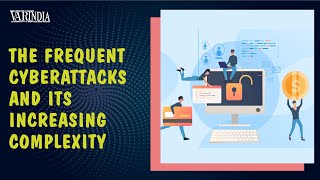
Welcome to our latest video, "You Become What You Think" In this inspiring journey, we delve into the powerful philosophy that our thoughts shape our reality. Through a series of enlightening stories, expert interviews, and practical tips, we explore how positive thinking can transform your life.
What to Expect:
Inspirational Stories: Hear from individuals who have dramatically changed their lives through positive thinking.
Expert Insights: Learn from psychologists and motivational speakers about the science and psychology behind this concept.
Practical Tips: Get actionable advice on how to incorporate positive thinking into your daily routine.
???? Why Watch:
Boost Your Motivation: Feel empowered to tackle your goals with a new mindset.
Transform Your Perspective: Learn how to shift your thinking patterns for a happier, more fulfilled life.
Join a Community: Connect with like-minded individuals in the comments who are on their own journey of self-improvement.
???? Don't forget to like, share, and subscribe for more content like this. Drop a comment below sharing how positive thinking has influenced your life!
हमारे नवीनतम वीडियो "आप वही बनते हैं जो आप सोचते हैं" में आपका स्वागत है! ????इस प्रेरणादायक यात्रा में, हम उस शक्तिशाली दर्शन की गहराई में जाते हैं कि हमारे विचार हमारी वास्तविकता को आकार देते हैं। प्रेरक कहानियों, विशेषज्ञों के साक्षात्कार, और व्यावहारिक सुझावों के माध्यम से, हम यह खोजते हैं कि सकारात्मक सोच कैसे आपके जीवन को परिवर्तित कर सकती है।
#positivemindset #personalgrowth #inspirationaljourneys #mindsetmatters #thinkpositive #lifetransformation #selfimprovement #motivationdaily #youarewhatyouthink #youtubecommunity
#sciencedivine
#sakshishree #spirituality #motivation #meditation #inspirational #motivational #inspiration #spiritual #guru
संबुद्ध सद्गुरु साक्षी श्री आपके जीवन की प्रमुख समस्याओं को बिना बताए स्वयं ही लिख देते
By Sadguru Sakshi Ram Kripal Ji| 0 views

Bigg Boss 17 OPENING VOTING Trend | Kaun Hoga Ghar Se Beghar?
#biggboss17 #ishamalviya #samarthjurel
- Stay Tuned For More Bollywood News
☞ Check All Bollywood Latest Update on our Channel
☞ Subscribe to our Channel https://goo.gl/UerBDn
☞ Like us on Facebook https://goo.gl/7Q896J
☞ Follow us on Twitter https://goo.gl/AjQfa4
☞ Circle us on G+ https://goo.gl/57XqjC
☞ Follow us on Instagram https://goo.gl/x48yEy
Bigg Boss 17 OPENING VOTING Trend | Kaun Hoga Ghar Se Beghar?
By Bollywood Spy| 57 views

#shahidkapoor #birthdaycelebration #shahidkapoorwifebirthday #bollywoodnews #shahidkapoorwife #mirakapoor #celebration #photoshared #todaytrendingnews #bollywoodcelebritiesstory #Entertainment #Bollywood #Shahid Kapoor Wished His Wife On Her Birthday #birthdaybash #ishankhatter #mirarajputkapoor #midnightcelebration #todaymatch #breakingnews #entertainmentnews #bollywoodsensation #kareenakapoorkhan #jabwemet #bloodydaddy #kabirsingh #movie #uttarpradesh #maharastra #mumbai #newstoday #kiaraadvani
Follow Us On:
Facebook : https://www.facebook.com/INDIALNV
Twitter : https://twitter.com/india_lnv
Instagram : https://www.instagram.com/lnv_india/
Shahid Kapoor ने Wife को विश किया Birthday :बोले- तुम मेरे दिल की रानी हो, Share कीं तस्वीरें
By LNV India| 500 views

On Bigg Boss 17 we have seen the fastest wild card entries and these would only cause lots of fireworks on the show. Now as Samarth Jurel, who is Isha Malviya's boyfriend, enters the BB17 house as a contestant, he spoke to Bollywood Bubble's host Nawaz Kochra. From exposing the violence Abhishek Kumar inflicted on Isha to sharing how Isha's ex used to slap her and cause her harm. He even confirmed their relationship and shared how seeing Isha getting close to Abhishek left him heartbroken. Commenting on Isha being Ankita Lokhande's shadow, Samarth also explained how his entry will change the dynamics on the show. Watch this explosive interview here!
#samarthjurel #ishamalviya #bollywoodbubble
Check out the video to know more.
SUBSCRIBE To Bollywood Bubble:
Click Here ► http://bit.ly/2hjMB6X
Tune into Bollywood Bubble, your one stop destination for all the latest happenings, hot gossips, rumours and exclusive B-Town news...
Also, Visit - https://www.bollywoodbubble.com . One stop Destination for Latest Bollywood Updates.
Like us on Facebook - https://www.facebook.com/BollywoodBubble
Follow us on Twitter - https://twitter.com/bollybubble
Follow us on Instagram - https://www.instagram.com/bollywoodbubble/
Click on the Subscribe Button NOW and Stay Tuned.
Isha Malviya’s boyfriend Samarth Jurel exposes her ex Abhishek Kumar & his violence | Bigg Boss 17
By Bollywood Bubble| 157 views

The man behind the ICT's jerseys for Asian Games 2023
#Cricket #Cricketreels #TeamIndia #trending #reels #reelsinstagram #indvseng #WorldCup #asiacup #trending #viral #Instagram #InstaReels #CricTracker
The man behind the ICT's jerseys for Asian Games 2023
By CricTracker| 93 views

Special Briefing on the Visit of President of Maldives to India (August 02, 2022)
By Ministry of External Affairs, India| 194307 views

Comparative Trade Statistics for the Years 2013 & 2014
(Top 25 Products)Watch India - USA Trade Statistics With HD Quality
By Indian Trade Portal| 467412 views

Tiger 3 Movie Gets 7 Am First Show On November 12
By Bollywood Crazies| 77 views

#BJPLive #BJP #covid19 #covid #vaccine #vaccination #covid19vaccine #pmmodi
Vial of the vaccine: Protecting India during the COVID-19 pandemic
► Subscribe Now ???? https://link.bjp.org/yt ????Stay Updated! ????
► Facebook ???? http://facebook.com/BJP4India
► Twitter ???? http://twitter.com/BJP4India
► Instagram ???? http://instagram.com/bjp4india
► Linkedin ???? https://www.linkedin.com/company/bharatiya-janata-party/
► Shorts Video ???? https://www.youtube.com/watch?v=8EoSdGriqs8&list=PL8Z1OKiWzyBHpgY--KQPQoGedordyb8ac
► PM Shri Narendra Modi's programs ???? https://www.youtube.com/watch?v=NQ2mG9eabWg&list=PL8Z1OKiWzyBH3ImCOpXsYZk5C-6GeKnKS
► BJP National President Shri JP Nadda's program ???? https://www.youtube.com/watch?v=mc3d67Cg3yk&list=PL8Z1OKiWzyBHWdpDfhww7RwmfMYjZYC7y
► HM Shri Amit Shah's programs ???? https://www.youtube.com/watch?v=tSX3TshTq20&list=PL8Z1OKiWzyBHIdo3uGZLPLCjb9iuYuG-2
► Popular videos ???? https://www.youtube.com/watch?v=y6mKBvuyOTg&list=UULPrwE8kVqtIUVUzKui2WVpuQ
► Playlists BJP Press ???? https://www.youtube.com/watch?v=BUUxF2zZdHI&list=PL8Z1OKiWzyBGesYbBbDcV4MtX8UUpv9Xo
Vial of the vaccine: Protecting India during the COVID-19 pandemic | PM Modi
By Bharatiya Janata Party Delhi| 28 views

A recession is generally defined as when an economy shrinks for two three-month periods, or quarters, in a row. The eurozone has been hit by rising food and energy prices that have weighed on households.
The Eurozone, which consists of 20 member states of European Union that have adopted the Euro as their primary currency, has fallen into recession. The recession is likely to have a number of negative consequences for the eurozone economy. It will lead to job losses, lower incomes, and a decline in economic activity.
Today's Headline in NewsHours
0:00 Intro
2:45 #WhatsApp launches new 'Channels' feature
3:13 #Google to discontinue Google Drive service for Windows 8 and 8.1 versions
3:38 Govt offering free tools to detect and remove malware from phone
4:05 #Adobe to bring AI image generation capabilities to Google Bard
4:35 Reliance Jio launches Apple AirTag-rival - JioTag
Follow Us On :-
Website:https://varindia.com/
https://www.facebook.com/VARINDIAMagazine/
https://twitter.com/varindiamag
https://www.instagram.com/varindia/
https://www.linkedin.com/company/14636899/admin/
https://in.pinterest.com/varindia/
https://varindia.tumblr.com/
Visit on https://varindia.com/ to know more
Labels & Copyrights :- VARINDIA
#varindia #news #technews #newshour #EurozoneCrisi #EuropeanEconomy #EconomicRecession #FinancialCrisis #GlobalEconomy #AusterityMeasures #MonetaryPolicy #FiscalPolicy #ECB #EU #EUBudget #tradewars #Brexit #EuroCurrency #Inflation #Unemployment #SovereignDebt #GDP #EconomicGrowth #PolicyResponse #EconomicChallenges #economicoutlook #MarketVolatility #FinancialStability #EuropeanUnion
Europe's Economic Crisis: An Overview of the Recession in the Eurozone
By VARINDIA| 27 views

There have been reports of tech talent shortages continuing amidst layoffs in some industries. While the COVID-19 pandemic has led to significant job losses in certain sectors, the demand for skilled workers in technology-related fields remains high.
Even as layoffs continue to impact the tech industry at large, there is still a critical shortage of skilled IT labour. The demand for tech talent greatly outstrips the supply, which will continue until at least 2026 based on forecast IT spend.
Tech layoffs do not mean that the IT talent shortage is over. IT spending on internal services is slowing in all industries, and enterprises are not keeping up with wage rate increases. As a result, enterprises will spend more money to retain fewer staff and will turn to IT services firms to fill in the gaps.”
This is due to several factors, including the continued growth of the tech industry, the rapid pace of technological innovation, and the increasing importance of digital transformation in businesses across all sectors. As a result, employers are often struggling to fill roles that require specialized technical skills, such as software development, data analytics, and cybersecurity.
Today's Headline in NewsHours
0:00 Intro
3:02 L&T Technology to pay $9.9 Million to settle visa fraud allegations
3:43 #ServiceNow appoints Kamolika Gupta Peres as VP & MD for Indian sub-continent
4:18 Many Apple services down for several hours
4:52 South Korea fines Google $32 million for anticompetitive practices
5:33 Smriti Irani asks Meta to sync with child helpline for quick response
Follow Us On :-
Website:https://varindia.com/
https://www.facebook.com/VARINDIAMagazine/
https://twitter.com/varindiamag
https://www.instagram.com/varindia/
https://www.linkedin.com/company/14636899/admin/
https://in.pinterest.com/varindia/
https://va
By VARINDIA| 17 views

#WorldwideITspending is projected to reach $4.6 trillion in 2023 according to the latest forecast by Gartner. This represents an increase of 5.5% from the previous year. The projected growth is primarily driven by enterprise software and cloud services, as well as continued investment in IT infrastructure such as servers, storage, and networking equipment.
The COVID-19 pandemic has accelerated the shift towards digital transformation and remote work, which is expected to continue to drive IT spending in the coming years. However, there are also concerns about potential supply chain disruptions and inflationary pressures that could impact IT spending.
IT spending will remain strong, even as many countries are projected to have near-flat gross domestic product growth and high inflation in 2023. Prioritization will be critical as CIOs look to optimize spend while using digital technology to transform the company’s value proposition, revenue and client interactions.
Today's Headline in NewsHours
0:00 Intro
2:31 PC market sees a sharp decline in beginning of 2023
3:02 MSI is the newest victim of a Ransomware Attack
3:33 #Apple bars 22 rival brands from opening shops near its India store
4:07 Parag Agrawal & other fired executives sue Twitter over unpaid legal fees
4:34 #Alibaba unveils an AI model similar to GPT
Follow Us On :-
Website:https://varindia.com/
https://www.facebook.com/VARINDIAMagazine/
https://twitter.com/varindiamag
https://www.instagram.com/varindia/
https://www.linkedin.com/company/14636899/admin/
https://in.pinterest.com/varindia/
https://varindia.tumblr.com/
Visit on https://varindia.com/ to know more
Labels & Copyrights :- VARINDIA
#ITspending #ITbudget #GlobalITspending #TechnologySpending #ITinvestment #DigitalTransformation #EnterpriseTechnology #ITexpense #ITcosts #
By VARINDIA| 27 views

Many enterprises are adopting #SASEtechnology. SASE (Secure Access Service Edge) provides a comprehensive, cloud-native, and hybrid networking & security solution that integrates various network security functions with WAN capabilities such as SD-WAN and cloud connectivity.
SASE has gained popularity in recent years as businesses seek to adopt more flexible and scalable network security solutions that can accommodate the increasing number of remote workers and cloud-based applications. SASE provides a cloud-native and hybrid networking and security solution that offers a unified and consistent security posture across all endpoints and cloud applications.
The shift towards cloud-based applications and services has made traditional security models, such as perimeter-based security less effective, and SASE provides a more flexible and agile approach to security.
Today's Headline in NewsHours
0:00 Intro
2:50 #Apple supplier Pegatron reportedly opening second India factory
3:17 TRAI to meet Telcos To Discuss spam Marketing Calls & Messages
3:52 GPS-based toll system to replace toll plazas in six months
4:27 #Twitter to remove 'legacy' blue checkmarks from April 1
4:56 #Google leases 3 million square feet of office space in Bengaluru
Follow Us On :-
https://www.facebook.com/VARINDIAMagazine/
https://twitter.com/varindiamag
https://www.instagram.com/varindia/
https://www.linkedin.com/company/14636899/admin/
https://in.pinterest.com/varindia/
https://varindia.tumblr.com/
Visit on https://varindia.com/ to know more
Labels & Copyrights :- VARINDIA
SASE to witness 34% revenue growth
By VARINDIA| 23 views

#working_from_home #Work_from_Office
Companies have opposed the practice of moonlighting, saying that employees doing multiple jobs can impact their productivity. Moonlighting has become a topic of debate in the IT industry as working from home (WFH) became the normal norm during the Covid-19 pandemic, which is believed to have led to a rise in dual employment. However, Indian IT firms are divided when it comes to moonlighting. For some, it is unethical while others call it the need of the hour.
About 50% of leaders say their company already requires or is planning to require employees to return to in-person work full-time in the next year. In the same report, 52% of workers said that they are thinking of switching to a full-time remote or hybrid job in 2022.
The issue of moonlighting or dual employment has emerged as a big talking point in the IT industry ever since Wipro Chairman Rishad Premji red-flagged the issue on Twitter, equating it to "cheating". Recently, Infosys allowed its staff to take up external gig work provided such an engagement does not compete with the company, its clients or pose conflict of interest.
At the same time, Happiest Minds' Executive Vice Chairman Joseph Anantharaju said, we have been quite clear with our people that it is something we will not accept... because when you sign a contract or employment offer, you are agreeing to work only for that company." While the majority of tech firms are against the idea of secondary work, companies like Tech Mahindra support the idea if its workers are open about it.
Moonlighting raises risks and questions around security, as well as commitment of workers in devoting their time and attention to end customers and delivery outcomes. HCL Technologies has said it does not approve of dual employment although it hastened to add that the issue is not a major one within the company.
Most employees do not seem to be too excited to
By VARINDIA| 23 views

Under the BRI (Belt and Road initiative), China dumped over $1 trillion as loans to nearly 150 developed countries at high rates of interest, becoming the world’s largest official creditor for the first time. But the country is learning hard lessons as the borrowing countries are facing foreign exchange crises and cannot pay back the Chinese debts.
Nearly 60 percent of China's overseas loans are currently held by countries considered to be in financial distress, compared with just 5 per cent in 2010. Countries like Pakistan and Sri Lanka are recent examples of China's worrisome situation. Amid the continued political instability, the economy of Sri Lanka collapsed recently and Pakistan is also on the brink of an economic collapse. The two countries are failing to repay their loans, posing a threat to the Chinese economy, the European Times reported
According to a study, to secure these BRI projects Chinese agencies often pay large sums to politicians and military officials in the borrowing countries because of which the terms of these loans are kept a secret.
Going forward, the Chinese economy is going to have a severe impact on producing low-cost mobile phones. There is a law called the foreign direct product rule that was first introduced in 1959 to control trading of US technologies. It essentially says that if a product was made using American technology, the US government has the power to stop it from being sold-including products made in foreign countries.
Now, the US officials applied the rule to China’s advanced computing and supercomputer industry to stop it from obtaining advanced computing chips. With this China is going to be impacted badly.
However, the next game plan of China is neither announced nor leaked over the internet, as China has full threshold on its data privacy and Great firewall. With this no Individuals and entities are also prohibited from providing internet access, server hosting, t
By VARINDIA| 23 views

The Secretary announced that Invest India is going to be leveraged in order to bring in higher foreign investment into India in the film sector. The Ministry has merged various film units under one; NFDC based in Mumbai which is going to be the hub of the cinematic arm of the government and wants to revamp the Film Facilitation Office.
The ministry is going to hand this over to Invest India, to come up with a single-window portal for opening theatres so that more and more theatres can come up and the public gets more avenues to watch the magic of films in theatres.
Observing the changed viewing habits of people due to the COVID-19 pandemic, the Secretary noted that when ticket prices were brought down to Rs 75 three days back, all shows were full. He added that this shows that if price points are right, people can afford theatres.
“The craving to go to the theatres is there, so we need to work on how we can bring people back to theatres,” he said. The secretary told the industry that the government hopes to table the amendments to the Cinematograph Act in the winter session of the parliament.
Going forward, the National Centre of Excellence for AVGC is going to be set up in collaboration with the private sector, the Secretary informed. There will be a proposal for a 48% stake for the Ministry of I&B, 26% for FICCI and 26% for CII, so that it is the private industry and not the government which leads the AVGC transformation. The Ministry of I&B functions will work as a catalyst for the upsurge in the media and entertainment industry.
Today's Headline in NewsHours
0:00 Intro
2:13 #Razorpay acquires PoshVine
2:48 #FTX to buy bankrupt Voyager’s assets
3:30 ED raids Coda Payments and freezes Rs68 Cr worth of deposits
4:12 Govt issues new rule to block stolen and fake smartphones
4:50 #HCLTechnologies is now HCLTech
Follow Us On :-
Website:https://varindia.c
By VARINDIA| 42 views

The #NationalLogisticsPolicy stands as one of the key initiatives in improving the effectiveness of India's logistics ecosystem. After seeing success in implementing GST to remove the interstate barrier in moving cargo, this policy should help integrate local supply chains with international supply chains better. It is imperative to reduce the logistics cost in India for improving the competitiveness of Indian goods both in domestic as well as export markets.
The government has been working on the policy for close to three years. It was delayed due to the Covid-19 pandemic. The policy is expected to bring down the logistics cost, which is as high as 12-13% of the GDP to around 8% of GDP in the next five years.
Reduced logistics cost and increased logistic efficiencies will energise the economy across sectors in multiple ways and take us many steps closer to emerging as a global manufacturing powerhouse.
Through this policy, the government also looks to provide a roadmap to reduce the country’s dependence on road transport for cargo movement and explore more options such as rail, shipping, road, and air transport.
#Digitaltransformation of this sector will also bring in global standards in warehousing infrastructure and operations by facilitating technology integration. Digitalisation of operations across the logistics sector will certainly make the dream come true by reducing the bottom–line expenses by expediting the last–mile delivery, helping businesses save time and money.
Over the past five fiscal years, the government has invested close to Rs 15 lakh crore in augmenting hard infrastructure such as roads, rail, ports and airports. Moreover, in the long run, this initiative will create a single-window e-logistics market and focus on the generation of employment, skill development, and competitiveness among medium and small enterprises.
Its right implementation and widespread adoption will help structural
By VARINDIA| 15 views

There is a saying that every disruption brings new opportunities. We can keep a positive attitude and see problems as opportunities. Disruptive innovation is where you create a new market by focusing on a different set of values than that are currently applied in the existing market. This new market then ultimately takes over the existing market. If the demand cycle flips to a higher scale than what was seen during the Covid-19 pandemic, companies will be stretched too thin to manage their resources.
The U.S. economy contracted for a second straight quarter between April and June as per the government data, it is adding fuel to recession fears. Many blue-chip tech companies started hiring resources, to offer service contracts including managed services, third party outsourced jobs by setting up BPO and KPO, with this direct hiring by the large corporates to come down.
As per IDC, Worldwide Services Contracts Reached $48 Billion in the First Half of 2022 with Strong Growth in Average Deal Size. More than 720 managed services deals were signed worldwide in the first half of 2022 with $48 billion in contract value.
While the total number of deals declined compared to the same period in 2021, the average deal size increased by 20%. Moreover, the average deal size in terms of Total Contract Value has almost doubled when compared to the first half of 2021.
The impact of #COVID19 has accelerated the adoption of digital technologies, specifically focused on providing a digital workplace, to ensure the continuation of business and minimize disruptions while improving flexibility and enhancing productivity, says expert. The push to become a digital-first organization has created opportunities for managed service providers with the expertise and resources to facilitate these efforts.
About 94% of the 1H22 deals were in the IT Outsourcing market, while the remaining 6% were Business Outsourcing deals. The IT Outsourcing contracts wer
By VARINDIA| 21 views

The damage from the #COVID19pandemic, the Russian invasion of Ukraine has magnified the slowdown in the #globaleconomy, which is entering a long term of feeble growth and elevated inflation. Stocks have tumbled across Europe, as soaring inflation puts pressure on central bankers to raise interest rates even more aggressively. With the US dollar in demand, the pound has sunk below $1.18 for the first time since March 2020, early in the pandemic.
As per Forbes, the Inflation stocks - which predominantly includes companies from the banking, insurance, consumer staples, oil and gas sectors - has declined by about 8% over the last month, marginally underperforming the broader S&P 500.
Finance Minister #NirmalaSitharaman, including the US, said that global tech companies are in panic due to fear of an economic slowdown in developed countries. After putting brakes on job cuts and hiring by tech-social media companies like Microsoft, Google, Facebook (meta), Oracle, and Twitter, Apple has now joined the list of these companies.
While the U.S. Federal Reserve took some time to respond to inflation, starting with a 0.25% rate hike in March 2022, it is getting more aggressive with its monetary policy tightening, after inflation numbers for May came in higher than expected. The central bank raised rates by 0.75% in June, its largest hike since 1994.
Let's look into how the global tech companies are pulling back.
Alphabet Inc. has decelerated their recruiting efforts. According to an internal memo, Chief Executive Officer Sundar Pichai told employees that- although the business added 10,000 Googlers in the second quarter- it will be slowing the pace of hiring for the rest of the year and prioritizing engineering and technical talent.
Amazon.com Inc. said in April that it was overstaffed after ramping up during the pandemic and needed to cut back. "As the variant subsided in the second half of the quarter and emp
By VARINDIA| 10 views

With advancements in technology, games have become more accessible and immersive than ever before, attracting people from all walks of life. The Gaming Market was valued at $198.40 billion in 2021, and it is expected to reach a value of $339.95 billion by 2027, registering a CAGR of 8.94% over 2022-2027.
Today, gaming has become a keystone in the entertainment sphere – replacing TV and even movies in key demographics. Constant innovation and technological advancement such as 3D graphics, VR, and AI that video games are continuously evolving and players want more realistic, fully immersive simulation for their gameplay.
Mixed-reality experiences, #Blockchaintechnology, NFT, and virtual worlds like #Metaverse are what web 3.0 would mean for the consumers. Hence, gaming companies have already started to work towards these advanced technologies for a better consumer experience in the gaming space.
Despite its popularity, this booming industry still faces many challenges such as guaranteeing fair play models and creating effective payment systems. Luckily, upcoming technologies like blockchain are gradually solving these pain points.
At its core, blockchain tech introduces decentralized and secure solutions that can be used to power a wide range of functions within the gaming industry. Most notably, non-fungible tokens; these are unique digital assets that can be traded and sold on secondary markets without third party interference.
Unlike the centralized traditional gaming ecosystems, NFTs allow gamers to truly own their virtual items and to participate in decentralized tournaments with minimal risk of fraud or tampering. Will the next era of games be hosted on blockchain?
Going forward, it is likely that most games will pivot into the metaverse. It is a new platform and a new application type, similar to how we talked about the web and websites in the early 90s. This explains why tech giants such as Microsoft and M
By VARINDIA| 17 views

The subscription video on demand (SVOD) service revenue in India is expected to grow at a compound annual growth rate of 15.5% from $1.3 billion in 2021 to $2.7 billion in 2026, driven by solid growth in SVOD subscriptions and an increase in unique SVOD household penetration, as per GlobalData.
India Subscription Video on Demand Forecast (Q4-2021)’ reveals that SVOD subscriptions in the country will increase at a CAGR of 16.2% during 2021-2026, driven by the increasing availability of affordable high-speed mobile internet, and a steady rise in household penetration of fixed broadband services, particularly high-speed fiber-to-the-home/building services, which enable the consumption of high-bandwidth OTT video content.
Moreover, the upcoming roll out of 5G networks will further aid in the growth of SVOD streaming services by facilitating a seamless streaming experience for consumers. The Indian SVOD market is on an accelerated growth path thanks to the availability of high-speed broadband services, growing smartphone penetration, and widespread popularity of OTT content among the younger population.
At the same time, the Global SVOD operators such as Disney+ Hotstar, Netflix and Amazon Prime Video, which have gained immense popularity in India, have been adopting innovative pricing plans with multi-device streaming options to expand their user base, and are investing heavily in developing premium original video content, especially in regional languages.
The result shows the Disney+ Hotstar platform is expected to hold the largest share of India’s #SVODservices market, in terms of subscriptions, through the 2021-2026 period. The growth can be attributed to the company’s wide, distinct pool of multilingual local and original content library, competitive pricing, and exclusive coverage rights to the Indian Premier League, one of the biggest sporting events in the country.
There has been a remarkable change in the viewing habi
By VARINDIA| 13 views

The Russia and #Ukrainewar is taking the world towards recession, with the growing impact on food, energy and fertiliser prices, and developing nations among the worst affected. Ukraine and Russia would likely see significant contractions, Europe, and the United States would see slower growth, whereas China will also see relatively sharp slowdown due to Covid, inflation and a pre-existing real estate crisis. So, are we going into recession in 2022?
The increased geopolitical risks induced by the Russian invasion of Ukraine will weigh adversely on global economic conditions throughout 2022. Such effects are estimated in our model to reduce #GDP and boost inflation significantly, exacerbating the policy trade-offs facing central banks around the world.
As per the IMF forecasts, global growth in 2022 is at 4.4%, but these projections are being revised downwards due to conflict and the fallout from sanctions. The US economy is likely to slow in 2022 and 2023 but will narrowly avoid a recession as the Federal Reserve implements its rate-tightening plan to curb inflation, as per the International Monetary Fund.
Experts are now forecasting on the type of recession to arrive, whether it’ll be a V-shaped recovery, which is quick, with a sharp decline to a bottom followed by a dramatic rise. In a U-shaped recovery, on the other hand, the economy spends longer at the bottom and then gradually rebounds.
Whereas, a W-recovery is when the economy passes through a recession and into recovery and then immediately enters another recession, and K-shaped means some parts of the economy recover more quickly than others. Whereas the Economists are watching the economy closely and many are boosting their odds of a recession occurring in the near term.
Citigroup, assessing global economic growth over the next 18 months, sees a 50% probability of a global recession happening, while Goldman Sachs has put the odds of a recession for the U.S. in th
By VARINDIA| 42 views

#Digitaleconomy is the economic activity that is derived from billions of everyday online connections among people, businesses, devices, data, and processes.
For the first time, the 2030 forecast has projected that the digital economy could reach a value of $1 trillion by the end of the decade.
The Growth in the digital economy would see Southeast Asia help define the future of technology globally. Technology has been critical in helping Southeast Asians get through the COVID-19 pandemic.
A report states, the size of the digital economy is in terms of gross merchandise value or the sum of goods sold through customer-to-customer platforms. The report covers Indonesia, Malaysia, Philippines, Thailand, Vietnam, and Singapore, which together account for roughly 90% of Southeast Asia’s total population.
India and Southeast Asia have both grown rapidly in the last decade, thanks to the acceleration of digital adoption and rising consumer incomes. Double-digit growth is forecast for all six countries this year with the Philippines leading the pack at a compounded annual rate of 93%. Last year, India emerged as the third-largest startup ecosystem in the world, after the USA and China. Southeast Asia, meanwhile, is on track to become a $1 trillion digital economy by 2030. The largest economy, Indonesia, could become twice the size of the regional market today.
The upbeat forecast for the region bodes well for countries that are gearing up to use digitalization as the linchpin for their economic recovery from the COVID-19 crisis. Lockdowns and mobility restrictions drove more people in the region to go online to buy food and other essentials, to pay their bills, to continue their studies or work, and even for entertainment. They include those that used such digital services for the first time.
Southeast Asians have embraced the digital lifestyle. Eight in 10 internet users in the region have made an online purchase at leas
By VARINDIA| 18 views

The future of NBFCs is witnessing good growth in consumer lending. The liquidity position has improved and is gradually coming back to normal. In the future also, NBFCs will play a crucial role in economic development and in financial inclusion. Amid the Covid-19 pandemic in the country, fintechs have been at the forefront of India’s financial inclusion efforts. The usage of digital and contactless payments surged, as people opted for safer ways to transact financially. The FinTech sector is now becoming India’s fastest emerging sector and this sector is expected to touch over $150 billion by 2023. The fact is Fintechs are closely working with NBFCs and many of them have obtained the NBFC license. The key role of fintechs in financial inclusion is by making changes in the traditional business model of banks and financial institutions; it can deliver financial products and services to the financially excluded population in a more accountable and efficient manner in the least possible time. In a nation where banking was considered a privilege, fintech changed the lives of the common man. Where once to create trust in banks you had to take so much effort, now the world’s 40 per cent digital transaction is happening there. Digital payments touched a record high in 2020 with all channels from the Unified Payments Interface to the Aadhar-enabled Payment System (AePS) registering stellar growth. In 2022, 82% of financial companies state they are planning to increase their fintech partnerships, showing an overwhelming level of confidence in technology as the future of finance. According to a recent report by payment solutions provider ACI Worldwide, India made 48.6 billion real-time payments through 2021, ahead of China at No. 2. The rise was cited due to an increase in Unified Payments Interface and quick response code-based merchant payments, along with a boost in cashless payments. We have seen an exponential growth in digital lending which is poised to tremendous adopti
By VARINDIA| 22 views

Technology has become more of a necessity than a luxury, especially since the COVID-19 pandemic began. While technology does help connect us, excessive screen time can also lead to problems like eye strain. Because of this, we were curious to see if the pandemic has led to more eye issues in the last two years. The pandemic necessitated change in human lifestyle has put a tremendous effect on the vision power of the body. COVID-19 is a systemic disease that affects many areas of the body, including the eyes. All sorts of mental health issues can affect vision, including anxiety, stress and depression. A survey with more than 1,000 people who wear glasses and/or contacts to get feedback on their eye health and eye habits throughout the past few years. Turns out that many people are having vision problems…but are putting off going to the doctor. Two out of five people admit their eyesight has gotten worse since the onset of the pandemic. Nearly 70% report having more trouble seeing further away, and almost one-third are dealing with issues reading up close. Since March 2020, three out of 10 people have gotten stronger prescriptions for their glasses or contacts.
A survey reveals, one out of three admits to not getting their eyes checked over the last two years. In fact, 25% say they’ve actually avoided getting an eye test, even though they know they need one! Masks have also impacted how people wear glasses. More than one in 10 (13%) say they wear contacts now instead of glasses, purely because of masks. Meanwhile, 25% of respondents say they wear their glasses more because of remote work. Technology has taken over workplaces across the globe and almost one in four (38%) say they spend more than eight hours a day looking at screens for their jobs. That comes with a cost. 29% say they feel that working from home has made their eyesight worse. The top issues facing people who work remotely include eye strain, fatigue, headaches, and trouble sleeping. One out
By VARINDIA| 26 views

The technical definition of a recession involves a fall in gross domestic product (GDP) over two consecutive quarters and many US business leaders are now predicting recession, seemingly due to the sharp decline in equity prices. The fact is, if business leaders really believe a recession is imminent, perhaps they will cut back on investment spending in a way that suppresses overall economic activity. Psychology matters.
Elon Musk is even more pessimistic than most economists and Wall Street experts. The Tesla CEO said in a May 16 Twitter post the U.S. is probably already in a recession that will last anywhere from 12-to-18 months. There is fear of a recession growing, macroeconomic factors "will affect the tech sector," said Alphabet and Google CEO Sundar Pichai. Google and other major tech players in the U.S. have continued to grow, due to COVID-19 pandemic. However, supply chain disruptions have cast a shadow over their business and their stock prices have dropped sharply since the start of the year owing to the Russia-Ukraine war, China lockdowns, high inflation and interest rate hikes, resulting in Big Tech stocks nose-diving. Alphabet's stocks are down by 22 per cent this year, as tech companies are battered by the worldwide slump in the markets. "Google definitely sees uncertainty ahead, like everyone else," Pichai was quoted as saying earlier this month. Snap, the parent company of Snapchat, is also slowing down on hiring this year. Pichai also pointed to the Russian invasion of Ukraine and monetary tightening by central banks around the world as concerns. "Economies tend to have cycles, and the tech industry tends to have more volatile cycles," he said, noting that the industry was bound to be affected somewhat by political and economic instability.
As business conditions worsen, Netflix has announced layoffs and Facebook parent Meta revealed plans to curb investment. Another concern is the accelerating
By VARINDIA| 24 views

From the start of the COVID-19 pandemic times, the demand for the visibility of identity & access management (IAM) has increased as high priority in getting remote access secured and the increased protection needed around digital transformation initiatives. With the rapid growth and pace of digital business, IT leaders now recognize the importance of IAM. As a result, demand for IAM and digital identity technologies has increased significantly, along with rapid investment. The access management market is expected to reach $19 billion in 2024, up from $13.7 billion in 2021. Yet, with the flurry of investment and development of existing IAM technologies, not all technologies are ready for production; some will require more extensive proofs of concept. With this the environments become more digital and cloud-enabled, IAM leaders need to ensure that they can manage the increase in volume and velocity of machine identities required to support digital business needs.
At the same time, as more companies encourage employees to work from anywhere, on any device, data loss prevention (DLP) is rapidly evolving from nice-to-have to must-have. In the past DLP was associated with complicated deployments and pervasive operational management issues, but DLP is more strategy than product, so success depends on methodology and execution. Machines such as servers, cloud environments, RPA and applications all require digital identities. These digital identities will enable IAM leaders to apply the most appropriate security policy to manage and control all of these entities. Experts say the implementation of DLP is often seen as a challenge, and inconsistent data loss prevention policies can hamper usual business activities and DLP cannot stop all attacks and nor can it mitigate the risk of poor business processes. A DLP program is a risk reduction, not a risk elimination exercise.
The COVID-19 pandemic has accelerated the need for robust identity proofing in digit
By VARINDIA| 5 views

More than 1.5 billion children and young people have been affected by school closures worldwide. Many of these students are now taking classes as well as socializing more online. Spending more time on virtual platforms can leave children vulnerable to online sexual exploitation and grooming, as predators look to exploit the COVID-19 pandemic. Similarly, Indian educational institutions and online platforms have now become a major target for cyberthreats, according to a report compiled by the Threat Research and Information Analytics Division of CloudSEK -- a Singapore-based AI-driven digital risk management enterprise. Based on the report, out of total targeted threats, 58% were aimed at India or India-based institutions, followed by the USA, UK, Indonesia and Brazil. In India, major attacks were seen on BYJU’s, IIM Kozhikode, as well as Tamil Nadu’s Directorate of Technical Education. This rise in cyberattacks on educational institutions is partly due to the massive spike in remote learning caused due to the novel coronavirus pandemic, where more novice internet users are lured to get trapped. The report states, cybercriminals that are breaching these institutions are actively also leaking databases, accesses, vulnerabilities, and exploits among other confidential information belonging to the institution on the dark web. The report further elaborates, with the given size and impact of the education sector, it is critical for institutions, students, parents, teachers and the government to ensure that information gathered and stored is not leaked and exploited by cybercriminals.
Virtual education witnessed a big jump in terms of adoption and growth. EdTech players and e-learning platforms, in collaboration with premier institutes and top companies, introduced different online programmes to target both students and professionals. Experts say, the next bubble burst will be the Online Education business. Researchers call for educational institutions to improve t
By VARINDIA| 6 views

The Covid-19 pandemic and the pathogen’s steady stream of variants have brought unprecedented disruption in the workplace and forced many professions to adopt technology. It also brought to the fore the fact that not every work or job required occupying space in an office. If we look at the global employment figure of around 3.33 billion, around 2 billion people operate in an informal employment mode; of this, the gig economy is already touching 200 million. Gig economy today ranges from ride-sharing, deliveries, home-services, beauty and wellness to even gig-work in the hi-tech space such as coding, project management, marketing, fintech, pharma, edu-tech and so on. Even MGNREGA, technically, is another form of gig work. The prime minister recently mentioned that 800 million people in India received free ration and benefited from the Pradhan Mantri Garib Kalyan Anna Yojana. This also indicates that a vast section of the population is still vulnerable, and we need to work harder to create more work opportunities for their livelihood. With the advent of internet and smartphone penetration, the gig economy started to grow, and due to its flexible and participatory nature, it gave the freedom and opportunity for workers to choose days/hours one wanted to engage to earn. However, one concern that kept everyone awake was social coverage and safety.
The ministry of labour has demonstrated India’s progressive outlook and is the first to acknowledge the growing number of workers associated with the unorganised sector and gig by extending social security benefits to them. Almost all notable start-ups operating in the gig economy space provide the gig workers with some form of social security cover like insurance and other benefits, and have often supplemented these provisions with additional voluntary provisions in many cases. The Social Security Code 2020 aims to provide social security for unorganised workers, gig workers and platform workers besides making provis
By VARINDIA| 23 views

A challenging worldwide geopolitical environment exacerbated by the COVID-19 pandemic—and, since February 2022, the Ukraine-Russia conflict—has gifted cyberattackers an uneven playing field, says GlobalData. It says that state-sponsored attacks are a significant risk, and such high threats are contributing towards increased spend on cybersecurity, with the global cybersecurity industry set to grow from $125.5 billion in 2020 to $198 billion in 2025. The last few years have shown that no one, not even specialist cybersecurity providers themselves, was safe from attack. Cyberattacks are frequent and increasingly complex, typically perpetrated by those furthering a geopolitical cause or attackers intent on making money. Companies manage an array of assets, including infrastructure, applications, endpoints, mobile devices, and cloud services, all of which are under threat. A report explains that those that are not after money are often motivated by revenge—typically a disgruntled employee or disaffected customer. Other threat actors include ‘hacktivists’ trying to gain attention for their cause, terrorists intent on damaging critical national infrastructure, or nation states using cyber warfare against other countries.
Maintaining the security of IT systems is a constant struggle for organizations of all types. New vulnerabilities can be uncovered at any time, and there is always the worry of an insider attack. Complex ransomware and supply chain threats will continue in the near future. The fallout from the widespread shift to remote working has not gone away. However, it is for sure, that threat is here to stay. The report also highlights that securing hybrid working, coping with ransomware and continuing supply chain threats, and moving to a new zero-trust security model, will drive strong growth in security spending over the next three years. There is a need for “Innovation, which is undoubtedly needed to counter the continuously evolving cyberthreat landsc
By VARINDIA| 6 views

No matter where we live, the pandemic has affected every person – the children most of all. Millions are missing out on basic health services, education and protection simply because they were born into poverty or because of their ethnicity, religion or race. Hybrid models will be the new mantra of working style. We’re going to witness more compelling virtual and hybrid experiences to reach the customers and engage the employees. Two years have passed since the Covid-19 pandemic broke out, thereby disrupting the daily lives and working patterns of millions of people. Many sectors have made a shift to working from home even as millions lost their jobs. We still don't know if and when we will return to normal life. Today, the key questions before the workers and employers are will they go to the office again - and, if so, when or how often? The year 2022 seems, companies will increasingly embrace new business models, and so will the entire partner community. Customer outcomes will become the main business drivers. Agility and flexibility will be the key differentiators, and partners will become business enablers. Thriving partners will act as trusted advisors to their customers enabling them to get all the benefits of the emerging XaaS model wherever they want and need their apps and data to be. It's about choice. Everything is going digital, and it is all about data. The power of data and data analytics will become even more important and ubiquitous to provide customers and partners precious insights. Especially at the edge, where data is being generated faster than it can be acted upon. An intelligent IT infrastructure that can harness and manage data to gain insights is critical for businesses moving into 2022. Organizations are looking to trusted local partners to provide cloud offerings with the same advantages of agility and scale offered by hyperscalers. Locally managed clouds offer the familiar, personalized experience customers expect from channel p
By VARINDIA| 8 views

Many of you must not be aware of the so called Superapp or Super Applications. The super-app is an omnichannel digital platform, the mobile or web application that can provide multiple services including payment and financial transaction processing, effectively becoming an all-encompassing self-contained commerce and communication online platform that embraces many aspects of personal and commercial life. Simply, it is a platform developed by a company offering various services under one umbrella. It usually involves a marketplace of third-party offerings fully integrated into the ecosystem and makes use of vast amounts of data to engage with users and offer a wide variety of experiences and services. India has already become a market where a majority of those experiencing the internet for the first time are doing so on their mobile phones. This is one of the main reasons why Indian companies are looking at building super apps. Customers can shop, book flight tickets, hotel accommodations and more using this app. The e-commerce application is expected to face stiff competition from Amazon, Flipkart and JioMart. According to a KPMG report, super-apps or conglomerated apps are having a disruptive influence on the banking and financial sector. Multiple banking apps mean that users have to manage with many login credentials and payment options, which turn out to be cumbersome.
Tata Neu super app is going to challenge Flipkart, JioMart and Amazon. Reliance Industries, under its Jio umbrella, has consolidated various services and offerings such as shopping, content streaming, groceries, payments, cloud storage services, ticket bookings etc. Further, Alibaba Group investee super-app Paytm started as an e-wallet and now offers a gamut of additional services such as mobile payments, eCommerce, insurance, movie tickets, digital gold, and so on. Flipkart Group owned payments app PhonePe has tied up with companies such as Ola Cabs, Swiggy, Grofers, AJio, Decathlon, Del
By VARINDIA| 58 views

In one hand, the COVID-19 pandemic has accelerated the adoption of e-commerce worldwide, on the other, it has led to the rise of e-commerce related frauds. According to a new study from Juniper Research, it has been found out that the value of e-commerce fraud-related losses has risen from $17.5 billion in 2020 to $20 billion by 2021, a staggering growth of a whopping 18% within a single year. The research found out that threat actors, as of late, are targeting consumers as they have increased their online shopping. And this, in turn, is exposing the insecure fraud mitigation processes of merchants who are not very familiar with the overwhelming fraud challenges that exist in the e-commerce space.
Increased security can easily lead to increased friction for consumers when it comes to payments. The new research report found out that while merchants are inclined towards reducing e-com fraud risks from their current levels, they are hesitant to introduce extra friction in the checkout process. Juniper Research found also revealed that one way to address this would be to include clear messaging about security checks to consumers and use automated behavioural analytics, which leverages A.I. to preserve the user experience, aka UX. The research highlighted that, merchants would need to make sure the extra layer of security checks are well justified to the user. Only then can they prevent higher cart abandonment rates while making sure they are lowering fraud risks at the same time.
Follow Us On :-
https://www.facebook.com/VARINDIAMagazine/
https://twitter.com/varindiamag
https://www.instagram.com/varindia/
https://www.linkedin.com/company/14636899/admin/
https://in.pinterest.com/varindia/?
https://varindia.tumblr.com/?
Visit on https://varindia.com/ to know more
Labels & Copyrights :- VARINDIA
G
By VARINDIA| 15 views